Touro Law Students Celebrate
About
Touro Law Celebrates Hispanic Heritage Month
Columbia:
A little about Columbia
Columbian food
While many Latin American cuisines are known for their spice, Colombian food is rarely ever spicy. One of the most common and only spicy sauces we use, called aji, is typically consumed with empanadas or topped over rice and meat in any meal. Colombian empanadas are distinguishable from those of fellow Latin nations because they look like a smooth golden half-moon without fringes. Inside, they are usually filled with ground or pulled beef mixed with potato and seasoned with guiso which is a tomato and onion stew. Like empanadas, other Colombian dishes like sancocho, ajiaco, and tamales are also not spicy. Tamales are wrapped and cooked in plantain leaves and eaten directly from within the leaf. It is filled with dough, carrots, and chicken or beef. Sancocho and ajiaco are both traditional soups that vary in color. Ajiaco is creamier and typically served with pulled chicken. Sancocho is more broth-based and each batch can be made with a different meat choice such as fish, oxtail, or chicken. Here, in New York, Queens is prominent for its Colombian community. For a delicious bite of traditional dishes or some quick street like Colombian hot dogs, Jackson Heights is sure to have it.
 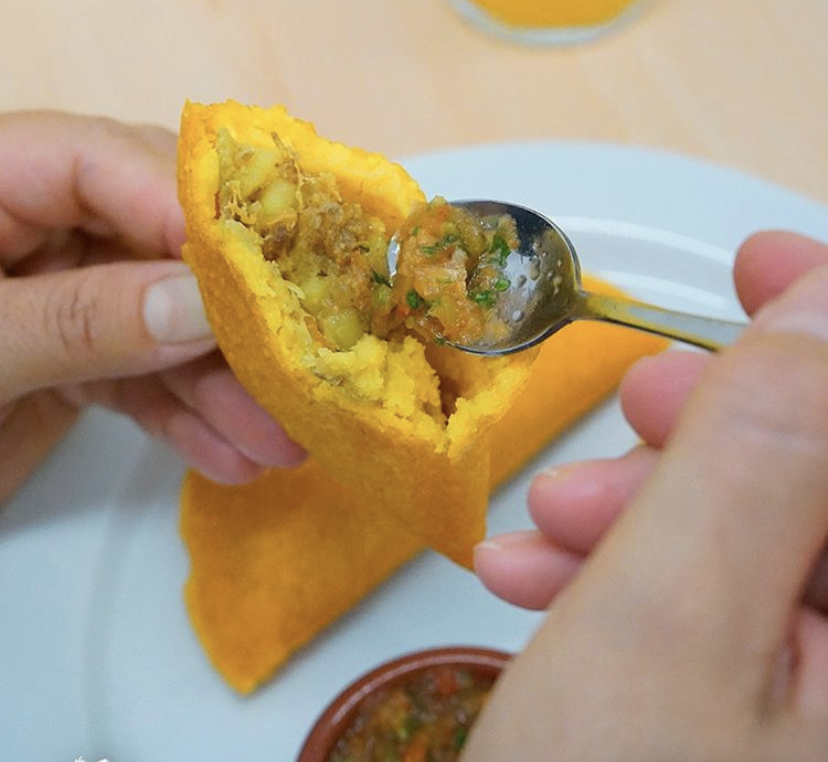 |
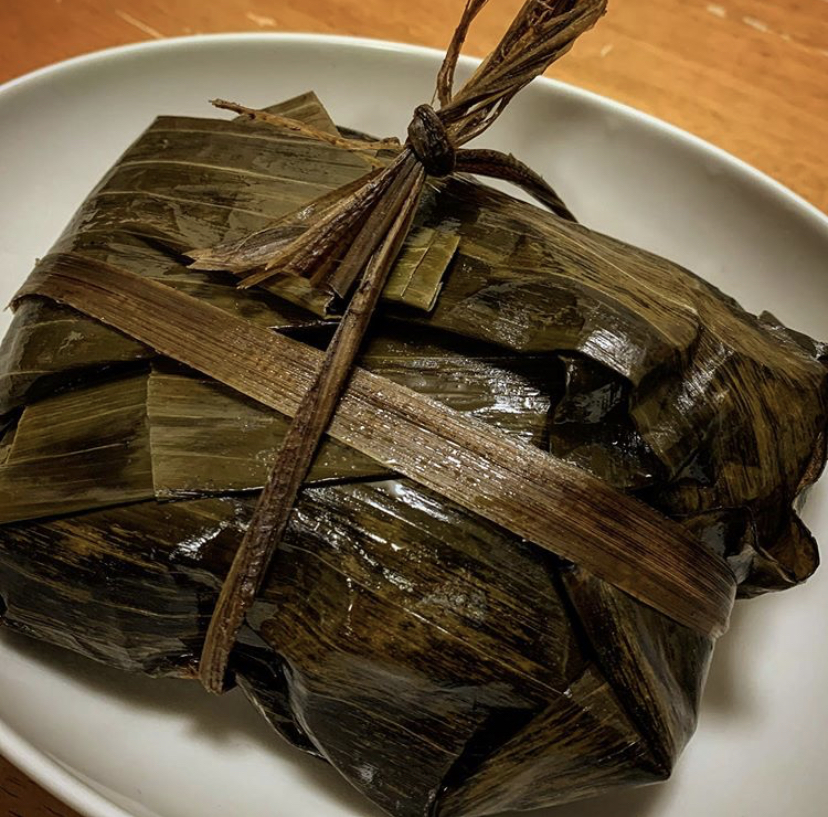 |
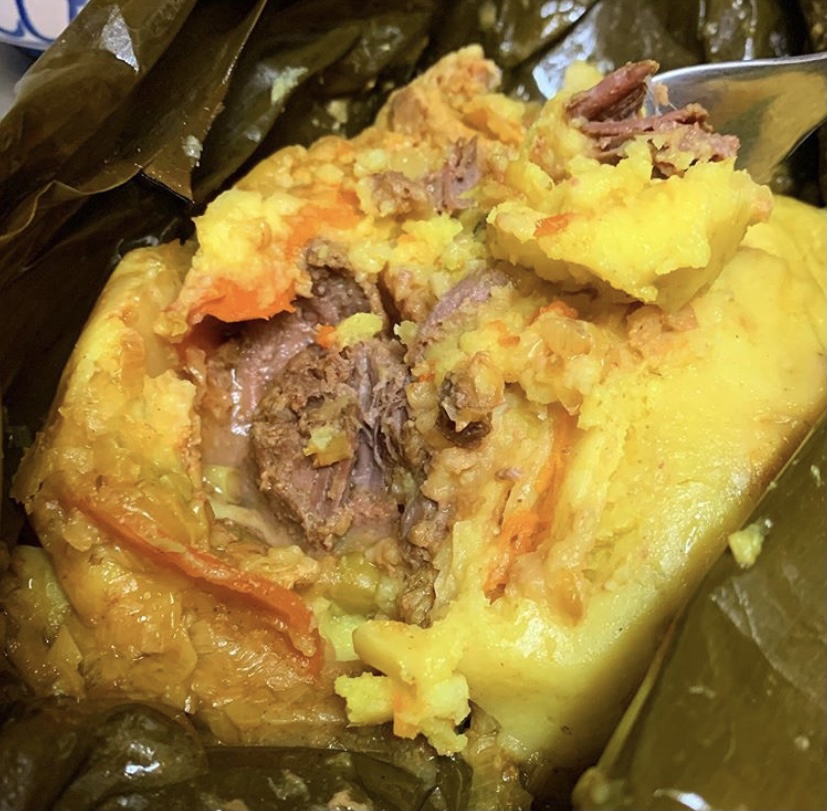 |
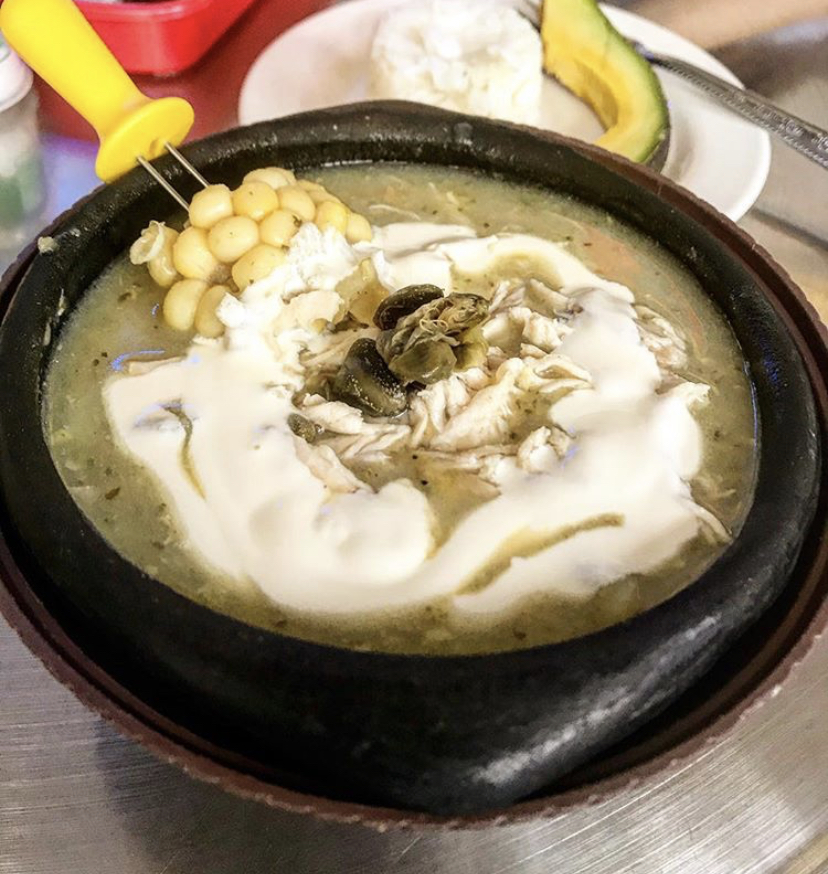 |
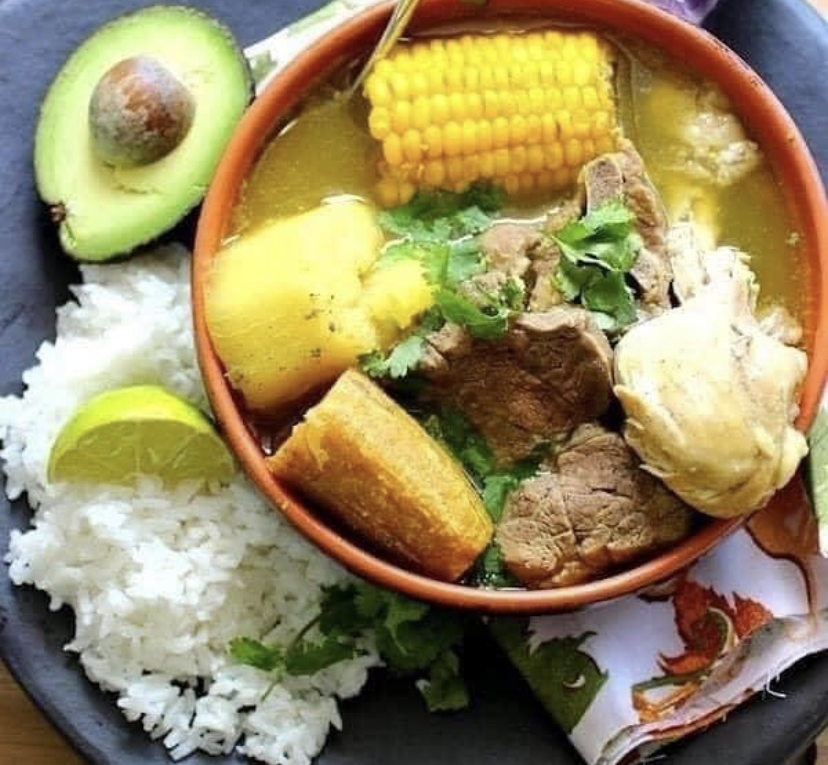 |
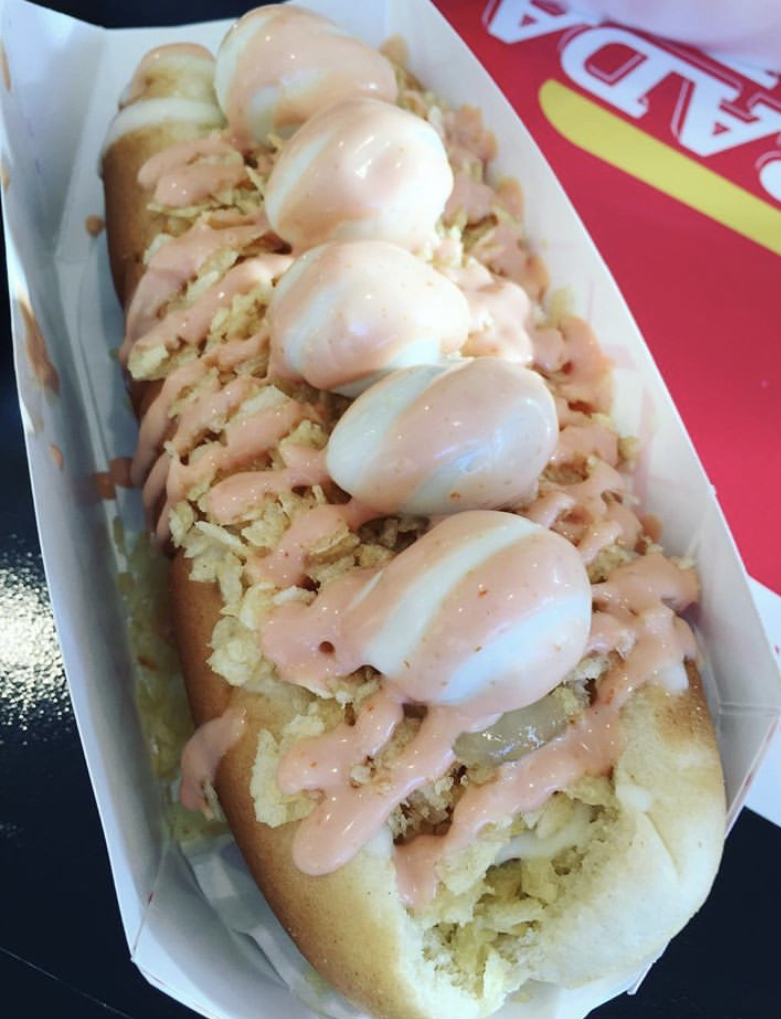 |
Dominican Republic
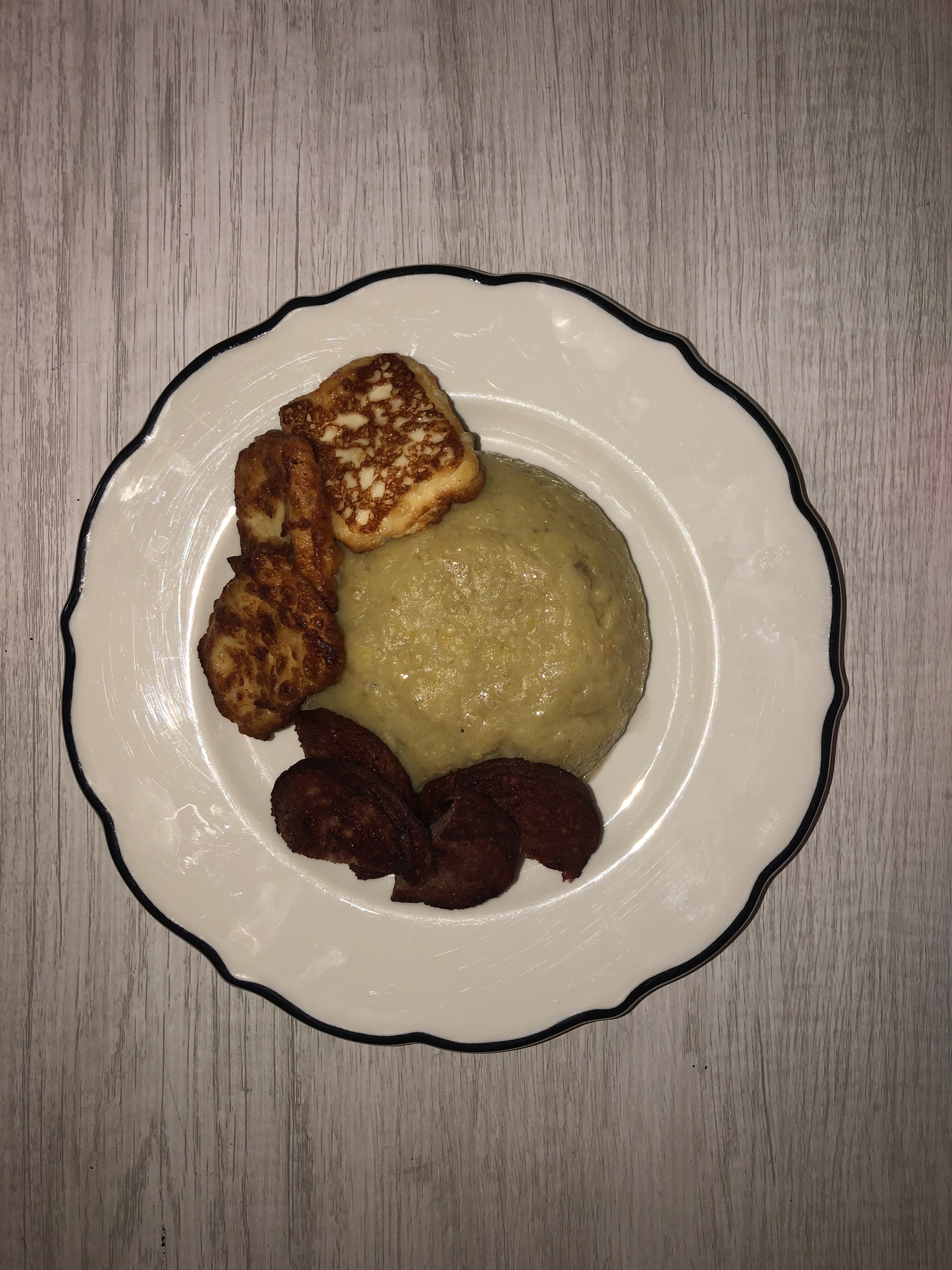 Mangu or Tres Golpes
Mangu or Tres Golpes
Ingredients:
- 4 Plantains
- 5 oz of Dominican Salami (or 4 thickly sliced pieces)
- 5 oz of Queso de Frier (or 4 thickly sliced pieces)
- 2 Eggs
- 1 Cup of Sautéed Onions2 Tbsp of Butter/Margarine
- 8 Tbsp of Canola Oil
- 1 Tbsp of Apple Cider Vinegar
- 2 Tbsp Salt
Instructions:
- Peel and Pit the seeds of the Plantain, cut in half, and again in half. Place in a pot of water to Boil. Boil for about 20 minutes, or until Plantains look bright yellow and pierce with a fork). Drain half the water from the plantains, leave the remaining water in the pot. Add 2 Tbsp of Butter/Margarine directly into the pot. Add 2 Tbsp of Salt. Using a Potato Masher, mash the plantains with the butter, leftover water, and salt, into a creamy texture.
- Slice up 5 Pieces of Salami (about a half-inch thickness) then set aside to fry.
- Slice up 5 Pieces of Queso de Frier (about a quarter-inch thickness) then set aside to fry.
- Pour 4 Tbsp of Oil into a small frying pan, cook on a low to medium heat, and fry the cheese and Salami. Fry all cheese first. Once it has a golden-brown color on both sides it is done.
- Then fry all the Salami, once it turns a dark maroon color on both sides, it is ready.
- Pour the 4 Tbsp of Oil into a small frying pan, add in 1 cup of onions, and 1 Tbsp of Vinegar. Once the Onions are cooked/sauteed, serve over Mangu.
- The eggs may be cooked to however is preferred. Typically, they are fried or scrambled with peppers and onions and ham. To scramble, use a Spray oil in a small frying pan. Sautee onions and peppers together, then gradually add in the ham. Once the ham is slightly cooked, add in eggs and scramble to desired consistency
Ecuador:
Ecuadorian Shrimp Ceviche
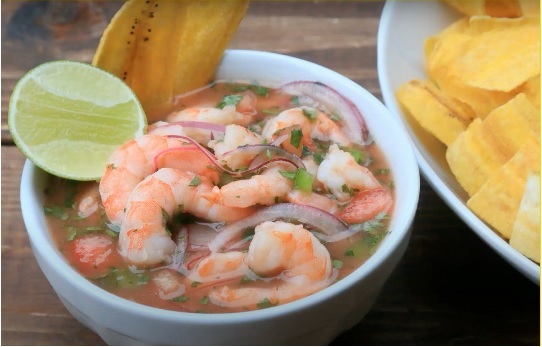 Ingredients:
Ingredients:
- 2 lbs of cooked shrimp
- 2 red onions sliced very thin
- 4 tomatoes sliced very think
- 10-15 limes freshly squeezed
- 1/2 cup of ketchup
- 2 tablespoons of spicy brown mustard
- 1 bunch of cilantro chopped very finely
- 4 Plantains
- Salt
- Pepper
- Olive Oil
Instructions:
- Soak onion slices in salt water for about 10 minutes, rinse well and drain
- Flash boil shrimp until cooked
- Mix all ingredients in a large bowl and let sit in the refrigerator for 1 to 2 hours
- Serve with Chifles (fried green plantain ships)

